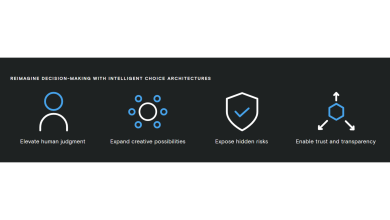
The global population is ageing at an unprecedented rate. Per WHO, in 2020, the number of people over the age 60 (elderly) surpassed the number of people under the age of 5. Over 30% of the elderly reside in high-income countries, and by 2050, 66% of elderly people will live in low to mid-income countries. As we age, we find ourselves living long enough to develop multiple chronic conditions that demand a disproportionate amount of care and healthcare resources. This demand causes an extreme burden on healthcare processes resulting in increased spend. Beyond the pathology, we must address social determinants of health (SDOH) to better address the underlying factors that affect a patient’s ability to access care, respond to treatments, and age with dignity.
Here, artificial intelligence presents itself as an opportunity. Many systems cannot scale traditional human-delivered care fast enough. When it comes to elder care, AI can make an effective contribution from conversational agents that reduce loneliness to sensors that detect falls, and care continuum software to ease the burden on clinicians and caretakers. If deployed thoughtfully, these tools can emphasize dignity and promote safety while simultaneously easing workforce strain. But if adopted poorly, they risk eroding privacy, amplifying bias, and displacing human relationships.
AI as a practical option
AI can help in three practical ways. By extending monitoring and early detection (e.g., fall detection, medication adherence), augmenting staff productivity (automated documentation, triage assistance), and providing social and cognitive engagement (companion agents, cognitive stimulation programs). Many of these solutions are available today and are being refined as we learn more about how elders interact with technology. For example, passive sensors and analytics can spot subtle changes in mobility or sleep that precede clinical decline. Such insights can augment standards of care and serve as decision support tools to intervene sooner. Automated documentation tools reduce time spent on paperwork and allow staff to provide increased hands-on care. Conversational agents can reduce loneliness in some older adults and provide cognitive prompts for those with early dementia, improving day-to-day quality of life.
The ethical and dignity problem we cannot ignore
Elder care raises unique ethical questions. Surveillance technologies that track movement, conversation, or medication adherence can account for safety but threaten privacy and autonomy. When technologies are presented as “solutions” for loneliness, they can inadvertently justify reduced human contact. There are also risks of algorithmic bias. For example, models trained on non-representative data may underperform for ethnic minorities, people with atypical speech, or those with sensory impairments. Any meaningful deployment must start with a moral commitment to human dignity: consent, transparency about data use, meaningful opt-out options, and regular human oversight.
Design and deployment principles for responsible adoption
There are various design and deployment principles to consider:
- People-first co-design: Involve older adults, family caregivers, and frontline staff from prototype through deployment to ensure tools meet real needs and respect preferences. Studies show acceptance hinges on perceived usefulness and control.
- Privacy by design: Default to minimal data collection, limit retention, and make data flows transparent. Consent must be ongoing and easy to understand, without anything getting lost in translation.
- Rigorous, settings-relevant evidence: Evaluate not only technical performance but opportunity for clinical outcomes, quality of life, workforce impacts, and equity across populations.
- Human oversight and escalation: AI systems should trigger human review, clear escalation pathways protect safety and moral accountability.
- Economic and accessibility equity: Make procurement and cost models realistic for small providers and home-based care; otherwise, the benefits will accrue only to well-resourced organizations. Reports show that smaller senior living providers benefit from limited-scope AI tools when affordability is considered.
Vendors, health systems, and regulators each have distinct roles. First, vendors must avoid hype when publishing independent usability and safety data while providing interoperable APIs. Health systems should pilot in real care settings using metrics that matter to patients and caregivers. Payers can accelerate responsible adoption by reimbursing for validated digital interventions may reduce hospitalizations, improve medication adherence, or improve quality of life. We need to be realistic and recognize real gains where they exist, while being candid about limits.
As the world continues to find new and improved ways to alleviate the common stressors of an aging population, the inclusion of AI in elder care can potentially shape the field of geriatric care as a whole. If executed with respect to core connection values such as empathy and health equity, it can assist in improving familial and communal relationships among the elderly without the need to use AI to replace them. Through the ethical use of augmentation in traditional forms of care, which will allow for the support of earlier intervention, personal engagement, and the efficiency of staff, culminating in the overall improvement of daily life. Yet, it is important to note that without careful observation, planning, and oversight, AI tools have the capacity to be used in ways that could potentially compromise patient care. As the gateway between artificial intelligence widens to incorporate healthcare, a moral and ethical promise must be made to use AI as a valuable, versatile, and flexible addition to existing health practices instead of as a replacement. Through the proper execution of artificial intelligence in their care, elderly adults have a chance to live safer and potentially longer lives, letting caregivers do what they do best: provide the highest quality care.



